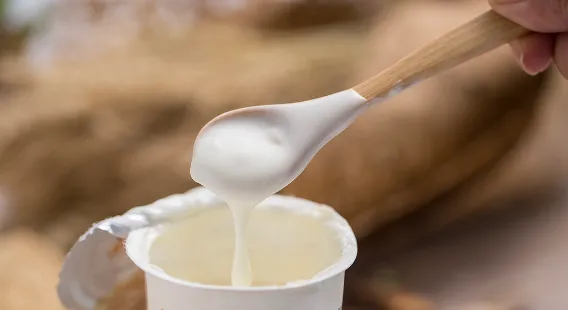
Exploring Cellulose: Types, Applications, and Industrial Uses
Cellulose is one of the most abundant natural polymers on Earth, serving as the structural component of plant cell walls. From cellulose fiber in textiles to advanced bao bì cellulose cho thực phẩm, cellulose derivatives play a critical role in numerous industries. This article explores cellulose types, their chemical derivatives, industrial applications, and modern innovations such as nanofibrillar cellulose and microfibrillated cellulose.

Different Types of Cellulose and Their Properties
Cellulose is a type of polysaccharide composed of glucose units linked by β(1→4) glycosidic bonds. Its natural abundance and chemical versatility have led to the development of multiple cellulose derivatives for industrial, pharmaceutical, and food applications.
Natural and Microcrystalline Cellulose
Cellulose occurs naturally in wood, cotton, and other plant materials. It forms the backbone for many industrial processes.
Microcrystalline cellulose (MCC) is derived from purified cellulose and is widely used as a pharmaceutical excipient for tablet binding, flow enhancement, and controlled-release formulations.
Cellulose nanoparticles and nanofibrillar cellulose represent advanced forms of cellulose, offering high surface area, strength, and functionality for nanocomposites, biomedical devices, and packaging materials.
Chemically Modified Cellulose
Carboxymethyl cellulose (CMC) and sodium carboxymethyl cellulose are water-soluble derivatives used as thickeners, stabilizers, and emulsifiers in foods and industrial formulations.
Methyl cellulose, hydroxyethyl cellulose, and hydroxypropyl cellulose are nonionic cellulose ethers, commonly used as binders, viscosity modifiers, and film formers.
Polyanionic cellulose and carboxymethyl cellulose in food enhance water retention and texture in processed foods.
Ethyl cellulose is a hydrophobic derivative used in coatings and sustained-release pharmaceutical formulations.
Specialty Cellulose Applications
Cellulose acetate is a key material for textiles, cigarette filters, and optical films.
Cellulose sanding sealer leverages cellulose’s film-forming properties to provide a smooth, sandable surface in woodworking and furniture finishing.
Hydroxypropyl methyl cellulose and cellosize hydroxyethyl cellulose are widely used as thickening agents, adhesives, and film formers in pharmaceutical, cosmetic, and construction applications.
Industrial and Food Applications of Cellulose
Packaging and Food
Cellulose packaging and cellulose-based packaging are increasingly used for sustainable, biodegradable, and recyclable packaging solutions.
Cellulose food packaging leverages cellulose’s barrier properties to protect food products while reducing plastic waste.
MHEC chemical is a hydroxyethyl methyl cellulose derivative often used in coatings, adhesives, and edible films.
100 cellulose and a cellulose forms are used in high-purity applications, including laboratory-grade filters, membranes, and food-grade films.
Pharmaceutical and Technical Applications
Microfibrillated cellulose and nanofibrillar cellulose provide reinforcement in hydrogels, drug delivery systems, and tissue engineering.
Hydroxypropyl cellulose and hydroxyethyl cellulose are used in ophthalmic solutions, topical formulations, and controlled-release drug matrices.
Cellulose sanding sealer improves coating uniformity, adhesion, and smoothness in industrial applications.
Environmental and Sustainability Considerations
Cellulose-based materials reduce reliance on petroleum-based plastics.
Cellulose packaging for food and other biodegradable applications demonstrate how cellulose derivatives can provide functional performance while minimizing environmental impact.
Conclusion
Cellulose is a highly versatile polymer, with applications ranging from microcrystalline cellulose in pharmaceuticals to cellulose-based packaging in food industries. Its natural abundance, chemical modifiability, and mechanical strength make it ideal for modern industrial and environmental applications.
Chemically modified forms like carboxymethyl cellulose, methyl cellulose, hydroxyethyl cellulose, and hydroxypropyl cellulose extend the functionality of cellulose, offering viscosity control, film formation, and stability for food, pharmaceutical, and technical applications.
Emerging technologies such as nanofibrillar cellulose and cellulose nanoparticles demonstrate the potential of cellulose to contribute to advanced materials, sustainable packaging, and high-performance composites. From cellulose acetate in textiles to chất bịt kín chà nhám cellulose in woodworking, cellulose remains indispensable in modern industry.

FAQs on Cellulose
What is microcrystalline cellulose and its uses?
Answer:Microcrystalline cellulose (MCC)is a purified, partially depolymerized cellulose used as a binder, filler, and flow enhancer in tablets and pharmaceutical formulations. It provides stability, improves compressibility, and supports controlled drug release.
How is carboxymethyl cellulose used in food?
Answer:Carboxymethyl cellulose in foodacts as a thickener, stabilizer, and emulsifier. Its water-binding ability improves texture, prevents syneresis, and stabilizes sauces, ice creams, and baked goods. Sodium carboxymethyl cellulose is a commonly used variant.
What are the environmental benefits of cellulose-based packaging?
Answer:Cellulose packaging for foodand cellulose-based packaging are biodegradable, recyclable, and derived from renewable resources. They reduce reliance on petroleum-based plastics and decrease environmental impact.
What are nanofibrillar and microfibrillated cellulose?
Answer:Nanofibrillar celluloseand microfibrillated cellulose are highly refined cellulose fibers with increased surface area. They are used to reinforce hydrogels, create advanced composites, and develop high-performance, sustainable materials.
What is the difference between methyl cellulose, hydroxyethyl cellulose, and hydroxypropyl cellulose?
Answer:Methyl celluloseforms gels upon heating and is used as a thickener. Hydroxyethyl cellulose is water-soluble and used as a viscosity modifier in cosmetics, pharmaceuticals, and construction. Hydroxypropyl cellulose is partially soluble in water and organic solvents, often used in coatings, ophthalmic solutions, and controlled-release drug formulations.
-
Hydroxypropyl Starch as a Sustainable Construction AdditiveNewsNov.24,2025
-
The Gelation Properties of CMCNewsNov.21,2025
-
Redispersible Latex Powder and Water Retention CapacityNewsNov.21,2025
-
Dosage Control for Polycarboxylate Water ReducerNewsNov.21,2025
-
Film-Forming Properties of Polyvinyl AlcoholNewsNov.21,2025
-
The Function of Gypsum Additives in MortarNewsNov.21,2025





















